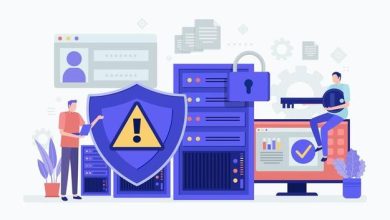Fortinet Report: OT Cybersecurity Risk Elevates within Executive Leadership Ranks
More Than Half (52%) of Organisations Report That The CISO/CSO Is Responsible for OT, Up from 16% in 2022, While 95% Of Organisations Report That the C-Suite Is Responsible For OT, Up from 41% in 2022

Fortinet® the global cybersecurity leader driving the convergence of networking and security, today announced the findings from its global “’2025 State of Operational Technology and Cybersecurity Report.” The results represent the current state of operational technology (OT) cybersecurity and highlight opportunities for continued improvement for organisations to secure an ever-expanding IT/OT threat landscape. In addition to trends and insights impacting OT organisations, the report offers best practices to help IT and OT security teams better secure.
“The seventh installment of the ‘2025 State of Operational Technology and Cybersecurity Report’ shows that organisations are taking OT security more seriously. We see this trend reflected in a notable increase in the assignment of responsibility for OT risk to the C-suite, alongside an uptick in organisations self-reporting increased rates of OT security maturity,” said Nirav Shah, Senior Vice President, Products and Solutions, at Fortinet. “Alongside these trends, we’re seeing a decrease in the impact of intrusions in organisations that prioritise OT security. Everyone from the C-suite on down needs to commit to protecting sensitive OT systems and allocating the necessary resources to secure their critical operations.”
What Fortinet Found Out in Its Latest Study
Key findings from the global Fortinet survey include:
- Responsibility for OT security continues to elevate within executive ranks. There has been a significant increase in the global trend of corporations planning to integrate cybersecurity under the CISO or other executives. As accountability continues to shift into executive leadership, OT security is elevated to a high-profile issue at the board level. The top internal leaders who influence OT cybersecurity decisions are now most likely to be the CISO or CSO by an increasingly wide margin. Now more than half (52%) of organisations report that the CISO/CSO is responsible for OT, up from 16% in 2022. For all C-suite roles, this has spiked to 95%. Additionally, the number of organisations intending to move OT cybersecurity under CISO in the next 12 months has increased from 60% to 80% in 2025.
- OT cybersecurity maturity is affecting the impact of intrusions. Self-reported OT security maturity has made notable progress this year. At the basic Level 1, 26% of organisations report establishing visibility and implementing segmentation, up from 20% in the previous year. The largest number of organisations state their security maturity is at the Level 2 access and profiling phase. The report also found a correlation between maturity and attacks. Those organisations that report being more mature (higher of Levels 0–4) are seeing fewer attacks or indicate that they are better able to handle lower-sophistication tactics, such as phishing. It is worth noting that some tactics, such as advanced persistent threats (APT) and OT malware, are difficult to detect, and less mature organisations may not have the security solutions in place to determine they exist. Overall, although nearly half of organizations experienced impacts, the impact of intrusions on organisations is declining, with a noteworthy reduction in operational outages that impacted revenue, which dropped from 52% to 42%.
- Adopting cybersecurity best practices is having a positive impact. In addition to the Levels of maturity affecting the impact of intrusions, it appears that adopting best practices such as implementing basic cyber hygiene and better training and awareness are having a real impact, including a significant drop in business email compromise. Other best practices include incorporating threat intelligence, which spiked (49%) since 2024. Additionally, the report saw a significant decrease in the number of OT device vendors, which is a sign of maturity and operational efficiency. More organisations (78%) are now using only one to four OT vendors, which indicates that many of these organizations are consolidating vendors as part of their best practices. Cybersecurity vendor consolidation is also a sign of maturity and corresponds to Fortinet customer experiences with the Fortinet OT Security Platform. Unified networking and security at remote OT sites enhanced visibility and reduced cyber risks, leading to a 93% reduction in cyber incidents vs. a flat network. The simplified Fortinet solutions also led to a 7x improvement in performance through reductions in triage and setup.
Best Practices Recommended by Fortinet
Fortinet’s global “2025 State of Operational Technology and Cybersecurity Report” provides actionable insights for organisations to strengthen their security posture. Organisations can address OT security challenges by adopting the following best practices:
- Establish visibility and compensating controls for OT assets. Organisations need the ability to see and understand everything that’s on their OT networks. Once visibility is established, organisations then need to protect critical devices and ones that may be vulnerable, which requires protective compensating controls that are designed for sensitive OT devices. Capabilities such as protocol-aware network policies, system-to-system interaction analysis, and endpoint monitoring can detect and prevent compromise of vulnerable assets.
- Deploy segmentation. Reducing intrusions requires a hardened OT environment with strong network policy controls at all access points. This kind of defensible OT architecture starts with creating network zones or segments. Standards such as ISA/IEC 62443 specifically call for segmentation to enforce controls between OT and IT networks and between OT systems. Teams should also evaluate the overall complexity of managing a solution and consider the benefits of an integrated or platform-based approach with centralised management capabilities.
- Integrate OT into security operations (SecOps) and incident response planning. Organisations should be maturing toward IT/OT SecOps. To get there, OT needs to be a specific consideration for SecOps and incident response plans, largely because of some of the distinctions between OT and IT environments, from unique device types to the broader consequences of an OT breach impacting critical operations. One key step in this direction is to have playbooks that include your organisation’s OT environment. This kind of advanced preparation will foster better collaboration across IT, OT, and production teams to adequately assess cyber and production risks. It can also ensure that the CISO has proper awareness, prioritisation, budget, and personnel allocations.
- Consider a platform approach to your overall security architecture. To address rapidly evolving OT threats and an expanding attack surface, many organisations have assembled a broad array of security solutions from different vendors. This has yielded an overly complex security architecture that inhibits visibility while placing an increased burden on limited security team resources. A platform-based approach to security can help organisations consolidate vendors and simplify their architecture. A robust security platform with specific capabilities for both IT networks and OT environments can provide solution integration for improved security efficacy while enabling centralised management for enhanced efficiency. Integration can also provide a foundation for automated responses to threats.
- Embrace OT-specific threat intelligence and security services. OT security depends on timely awareness and precise analytical insights about imminent risks. A platform-based security architecture should also apply Artificial Intelligence (AI)-powered threat intelligence for near-real-time protection against the latest threats, attack variants, and exposures. Organisations should ensure their threat intelligence and content sources include robust, OT-specific information in their feeds and services.
Fortinet Report Overview
- Fortinet’s “2025 State of Operational Technology and Cybersecurity Report” is based on data from a global survey of more than 550 OT professionals, conducted by a third-party research company.
- Survey respondents were from different locations around the world, including Australia, New Zealand, Argentina, Brazil, Canada, Mainland China, Colombia, Denmark, Egypt, France, Germany, Hong Kong, India, Indonesia, Israel, Italy, Japan, Malaysia, Mexico, Norway, Philippines, Poland, Portugal, Singapore, South Africa, South Korea, Spain, Taiwan, Thailand, United Kingdom, and the United States, among others.
- Respondents to the Fortinet survey represent a range of industries that are heavy users of OT, including: manufacturing, transportation/logistics, healthcare/pharma, oil, gas, and refining, energy/utilities, chemical/petrochemical, and water/wastewater.
- Most of those surveyed, regardless of title, are deeply involved in cybersecurity purchasing decisions. Many respondents are responsible for operations technology at their organization and/or have reporting responsibility for manufacturing or plant operations.
Read Fortinet’s full report to learn more about the state of OT security in 2025.




